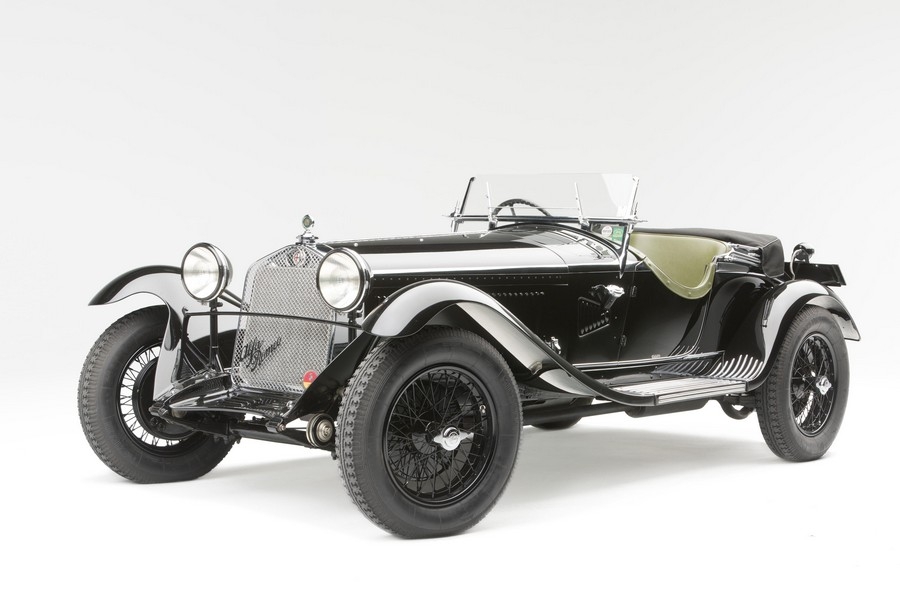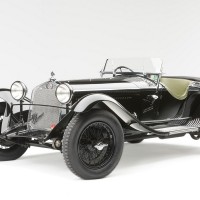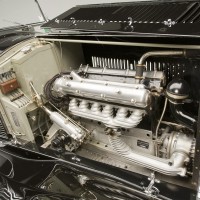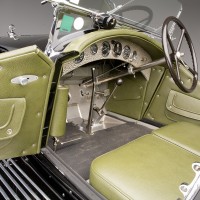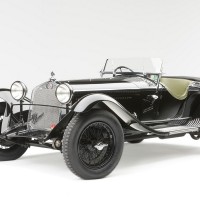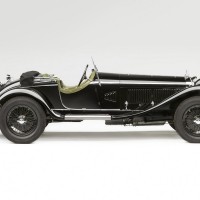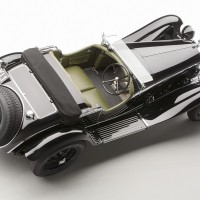SCM Analysis
Detailing
| Vehicle: | 1931 Alfa Romeo 6C 1750 Supercharged Gran Sport Spider, Coachwork by Zagato |
| Number Produced: | 372 (all 6C 1750s) |
| Original List Price: | $3,692 |
| Tune Up Cost: | $900 |
| Distributor Caps: | $750 |
| Chassis Number Location: | Right frame rail behind back axle |
| Engine Number Location: | Right side of block |
| Club Info: | Alfa Romeo Owners Club |
| Website: | http://www.aroc-usa.org |
| Investment Grade: | A |
This car, Lot 130, sold for $3,080,000, including buyer’s premium, at Bonhams’ Scottsdale, AZ, sale on January 16, 2014.
I was one of the panelists at the SCM Insider’s Seminar held at the Gooding & Company preview in Scottsdale, AZ, in January of this year. My colleagues were Simon Kidston, Carl Bomstead and Steve Serio. One of the topics we were assigned was to discuss the definition of a blue-chip collectible in the vintage-car world. Another was the identification of which four cars we would buy for a personal collection priced at under $50,000, under $250,000, under $1m and under $10m.
When the dust had settled, an interesting fact had emerged: The marque most often included in both the blue-chip and personal collections at various price ranges was Alfa Romeo. There is no doubt that regardless of the relentless slow-motion brand murder currently being committed by the management of the Fiat Group, Alfa has built more legendary cars — or at least more cars that enthusiasts want to own and drive — than any other marque.
A supreme 6C 1750
Near the summit of Alfa’s Mount Olympus is the 6C 1750, and the 6C 1750 that reigns over all its siblings is the supercharged Gran Sport Spider as bodied by Zagato. In any analysis of attributes of value we appraisers make, rarity, beauty, historical importance and provenance are foremost.
That the 1750 is rare, especially compared with modern production volume and rates of survival, is clear. That the Zagato-bodied cars are beautiful is, as far as most are concerned, inarguable. The racing record of the 6C 1750 — particularly the light and durable Zagato-clothed Gran Sport models and their role in the competition reputation of Alfa Romeo — is a matter of historic fact. This particular example also possesses a complete ownership chain back to the first owner, who was titled, talented and well known.
This vehicle is also the poster child for what we should all do with a great car, if we had in equal measure cash, testosterone and prodigious good fortune.
The recipe is simple: Take an important car, send it to the world’s leading restorers for an international-level restoration, win leading concours prizes, ship it to Italy, drive it at speed through the pouring rain in the Mille Miglia Storico, fly your restorer over to clean it up afterwards, and then show it at the Villa d’Este concours. Finally, sell it big at auction. This is simple — not easy, but simple — and that this worked out so well is a tribute to all involved: owner, restorer and the car itself.
A true blue-chip car
In today’s fast-moving, heated marketplace, with records falling monthly, there is another side that gets relatively little attention. There are still a good number of cars offered for sale that seem to have all the ingredients — yet they somehow just don’t come together.
Buyers will pay — and pay dearly — for certain cars at certain times in certain places. The story counts — but it had better be a good story. If the story involves the words “believed to be,” “said to be,” “may” or “it is uncertain that,” chances are great that either the market will take a discount or the car will not sell.
I am not saying that a car must be completely original to be valuable or desirable — although originality will enhance value. If changes have been made, they must be documented, credible and consistent.
As with any blue chip, whether it is a painting, sculpture, time piece or motor vehicle, the name only gets it so far. After that, it must fulfill the basic requirements of any important object that it be true to the creators’ intent and intended use. This car did all that and more, and quite rightly rang the bell in the auction room.
This car is the perfect blend of beauty, history, usability and desirability, the combination of which is the true definition of the best of the best. I would consider this car both well sold and absolutely well bought. ♦
(Introductory description courtesy of Bonhams.)
